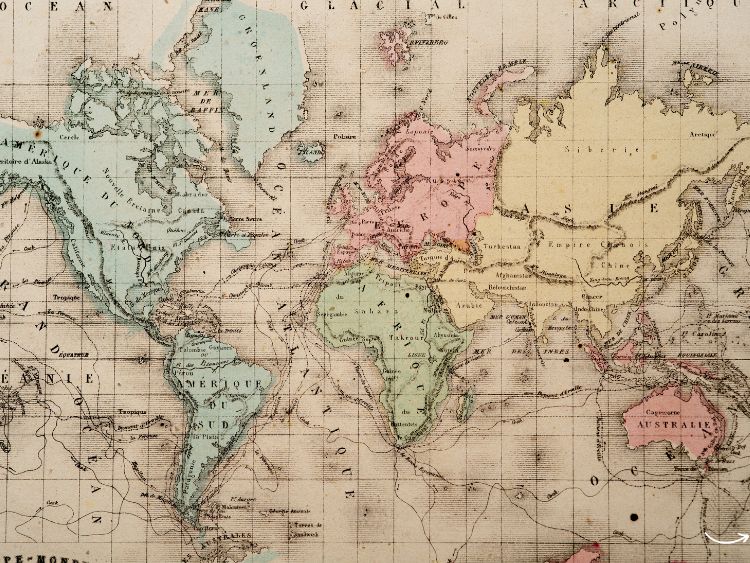The Titanic’s voyage remains one of the most captivating stories in maritime history. Even over a century later, the tale of this majestic ship’s journey continues to evoke a mix of awe and sorrow. But what really happened during the Titanic’s journey? Where did it go, and what events led to its tragic end? In this article, we’ll navigate through the Titanic journey map, piecing together the critical moments of this ill-fated voyage.
The Titanic: A Marvel of Modern Engineering
Before diving into the Titanic’s route, it’s essential to appreciate what this ship symbolized. Launched on May 31, 1911, in Belfast, the Titanic was the largest and most luxurious passenger liner of its time. It was a floating palace designed to provide comfort, elegance, and safety. Boasting advanced technology, it was considered unsinkable—a notion that would be tragically disproven.
Key Features of the Titanic
- Size and Capacity: At 882 feet long and 175 feet high, the Titanic could carry up to 2,435 passengers and 900 crew members.
- Innovative Design: The ship featured 16 watertight compartments, believed to make it virtually unsinkable.
- Luxury: From the grand staircase to the Turkish baths, the Titanic was a symbol of opulence and innovation.
The Titanic’s Journey: From Southampton to the Atlantic
The Titanic’s maiden voyage began on April 10, 1912, from Southampton, England. The ship was scheduled to sail across the Atlantic, making stops in Cherbourg, France, and Queenstown (now Cobh), Ireland, before heading to New York City. The Titanic journey map reveals the following key points:
Southampton, England: The Starting Point
- Departure: The Titanic set sail from Southampton at noon on April 10, 1912. The ship was carrying some of the wealthiest people of the time, along with hundreds of immigrants looking for a new life in America.
- Significance: Southampton was a major port for transatlantic voyages, and the Titanic’s departure was a significant event, drawing crowds to witness the launch of the “unsinkable” ship.
Cherbourg, France: The First Stop
- Arrival: The Titanic reached Cherbourg later that evening, around 6:30 PM.
- Purpose: This stop was primarily to pick up additional passengers, including notable figures like John Jacob Astor IV and Molly Brown.
- Challenges: The port’s facilities were too small to accommodate the Titanic, so passengers were ferried to the ship.
Queenstown (Cobh), Ireland: The Final Stop Before the Atlantic
- Arrival: On April 11, 1912, the Titanic made its last stop in Queenstown, arriving at 11:30 AM.
- Departure: The ship set out for New York at 1:30 PM, fully loaded with passengers and supplies.
- Significance: Queenstown was the last land the Titanic’s passengers would ever see.
The Atlantic Crossing: Calm Waters and Ice Warnings
The Titanic’s journey across the Atlantic was marked by a series of iceberg warnings, which, unfortunately, were not given the attention they deserved. The ship sailed through calm waters, with passengers enjoying the luxurious amenities on board, unaware of the impending disaster.
Iceberg Warnings Ignored
- April 12-14, 1912: The Titanic received multiple warnings from other ships about icebergs in the North Atlantic.
- Crew Response: Despite these warnings, the ship continued at full speed, a decision that would later be heavily criticized.
The Calm Before the Storm
- April 14, 1912: The night of April 14th was exceptionally calm—too calm, in fact, making it difficult to spot icebergs. This eerie stillness contributed to the crew’s inability to detect the iceberg that would seal the Titanic’s fate.
The Collision: A Fatal Encounter
At 11:40 PM on April 14, 1912, the Titanic struck an iceberg in the North Atlantic. The impact was devastating, ripping a series of holes along the ship’s starboard side. The damage was catastrophic, leading to the sinking of the “unsinkable” ship.
The Iceberg: A Silent Killer
- Location: The collision occurred about 370 miles south of Newfoundland, in the frigid waters of the North Atlantic.
- Impact: The iceberg tore through the ship’s hull, flooding five of the 16 watertight compartments—more than the ship could withstand.
The Sinking: A Tragic Descent
- Timeline: Over the next two and a half hours, the Titanic slowly sank into the icy depths of the Atlantic.
- Lifeboats: With lifeboats for only half the passengers, the evacuation was chaotic and incomplete. Many lifeboats were launched only partially filled.
The Aftermath: A Legacy of Loss and Lessons
The sinking of the Titanic resulted in the loss of over 1,500 lives, making it one of the deadliest maritime disasters in history. The tragedy led to significant changes in maritime laws and safety practices.
Rescue and Recovery
- Rescue Efforts: The RMS Carpathia arrived at the scene several hours after the Titanic had sunk, rescuing over 700 survivors from lifeboats.
- Recovery: The bodies of many victims were never recovered, but the disaster left an indelible mark on maritime history.
Changes in Maritime Law
- Lifeboat Requirements: The disaster led to the implementation of the International Convention for the Safety of Life at Sea (SOLAS) in 1914, mandating sufficient lifeboats for all passengers.
- Ice Patrol: The International Ice Patrol was established to monitor iceberg dangers in the North Atlantic.
Mapping the Titanic’s Journey: Understanding the Path to Tragedy
A detailed Titanic journey map provides more than just a route—it tells the story of human ambition, hubris, and the devastating consequences of ignoring nature’s warnings. As we trace the Titanic’s path from Southampton to the icy waters of the North Atlantic, we can better understand the factors that contributed to its tragic end.
The Route: A Visual Representation
- Departure: Southampton, England
- Stops: Cherbourg, France; Queenstown (Cobh), Ireland
- Disaster: North Atlantic, near Newfoundland
- Final Resting Place: The Titanic now lies at a depth of about 12,500 feet, roughly 370 miles south-southeast off the coast of Newfoundland.
Lessons Learned
- Preparedness: The Titanic’s journey map is a stark reminder of the importance of preparedness and caution.
- Human Error: The decisions made during this voyage highlight the tragic consequences of human error and overconfidence.
FAQs
- What was the Titanic’s intended route?
The Titanic’s intended route was from Southampton, England, to New York City, with planned stops in Cherbourg, France, and Queenstown (Cobh), Ireland. - Where did the Titanic sink?
The Titanic sank in the North Atlantic, about 370 miles south of Newfoundland. - How long was the Titanic’s journey before it sank?
The Titanic’s journey lasted just four days before it struck an iceberg on the night of April 14, 1912, and sank in the early hours of April 15. - Were there any survivors?
Yes, over 700 people survived the sinking of the Titanic, rescued by the RMS Carpathia. - What changes were made after the Titanic disaster?
The Titanic disaster led to significant changes in maritime safety laws, including the requirement for sufficient lifeboats and the establishment of the International Ice Patrol.
Summary
The Titanic’s journey map is more than a simple route; it’s a symbol of human achievement and tragedy. From its majestic departure in Southampton to its final resting place in the icy depths of the Atlantic, the Titanic’s voyage is a story that continues to captivate and educate us. By understanding the key moments and decisions that shaped this journey, we not only honor the memory of those lost but also learn invaluable lessons about caution, preparedness, and respect for nature’s power.



